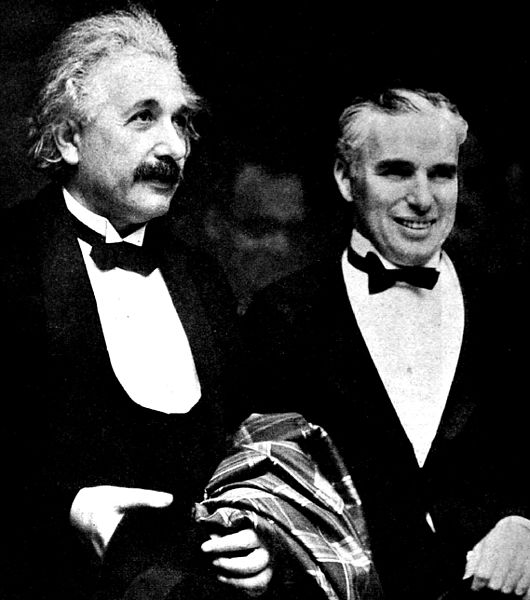
I’m making some notes for myself here, in order to ensure that (as far as it’s possible and to the limits of my capacity) I accurately understand some concepts in physics that, someday, I intend to discuss briefly in something that I’m writing.
The topic today is “quantum entanglement.” If anything in the utterly unoriginal and very preliminary notes below is incorrect or misleadingly formulated — I am, to put it mildly, not operating in my familiar element with this subject — I would appreciate it if somebody who is better versed in quantum theory would correct me.
Quantum entanglement is a phenomenon in particle physics. It concerns pairs of particles or even groups of particles for which the state of one particle — for example, its momentum, spin, position, or polarization — cannot be described without reference to the state of the other paired particle or to the state of the other particles in the group. The states of the relevant particles are said to be “correlated,” either because of the way they’ve been generated or the way in which they interact, or because they’re spatially proximate to each other.
For instance, if the total “spin” of a pair of particles is known to be zero, and if one particle is found to have a clockwise spin on a particular axis, then the spin of the partner particle, if it’s measured on that same axis, will invariably be counterclockwise.
But this fact leads to some very puzzling implications. For example, if a property of a particle is measured, that measurement will inescapably cause a quantum collapse for that particle. However, if the particle is “entangled” with another particle or particles, the effect of that collapse will extend to the totality of the entangled system. Somehow, the other particle or particles seem to “know” that a measurement has been performed on the other particle — even if they’re physically very far apart — and to “know” what the outcome of that measurement was, even at sometimes perfectly enormous distances (conceivably at opposite sides of the cosmos).
The classical papers on the subject are, evidently,
Einstein A., Podolsky B., and Rosen N., “Can Quantum-Mechanical Description of Physical Reality Be Considered Complete?” Phys. Rev. 47 (1935) 10:777–780.
Schrödinger E. (1935), “Discussion of probability relations between separated systems,” Mathematical Proceedings of the Cambridge Philosophical Society 31 (1935) 4:555–563.
Schrödinger E. (1936), “Probability relations between separated systems,” Mathematical Proceedings of the Cambridge Philosophical Society 32 (1936) 3:446–452.
Einstein, for one, very much disliked the whole idea, which he famously dismissed as spukhafte Fernwirkung, which has come into English as “spooky action at a distance.” He considered it impossible and said that, if quantum theory predicted it, so much the worse for quantum theory; it must be mistaken or incomplete.
However, the phenomenon has been verified experimentally since that time — with photons, neutrinos, electrons, relatively large molecules, and even small diamonds. Still, for a while it was thought that the result of the test on one particle, or at least something about the nature or character of the test, might somehow have been transmitted to the other particle, thereby causing the result.
In more recent research, though, “loophole-free” tests have been conducted on particles located so far apart that communications between them at the speed of light — the fastest speed that current physics (under the special theory of relativity) permits — would have taken longer (and, in one case, as much as 10,000 times longer) than would be permitted by the interval between measurements of the two particles. In other words, “communication” between the two particles appears to be impossible under current doctrines of physics.











